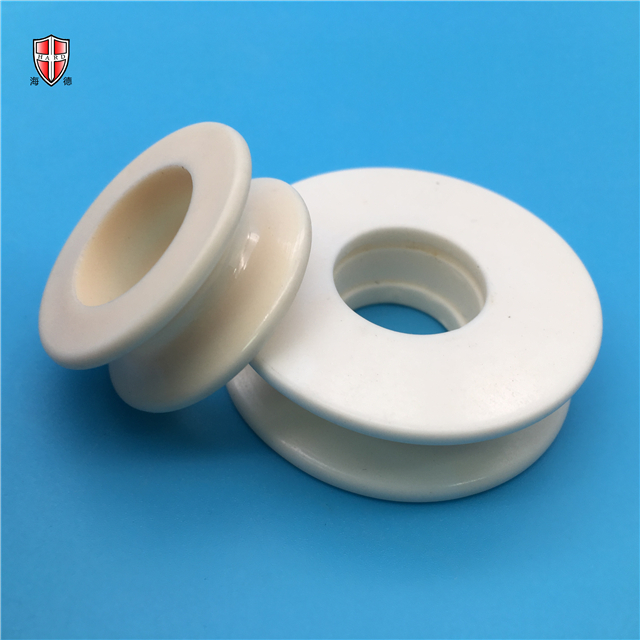
[China Aluminum Industry Network] Bauxite is actually a term commonly used in industry and refers to the ore consisting mainly of gibbsite, boehmite or dicalite. Bauxite is the main ore resource in current alumina production. More than 99% of alumina in the world is produced from bauxite.
The method of producing alumina from bauxite can be roughly divided into four categories, namely alkali method, acid method, acid-base combination method and thermal method. However, almost all of them used in industrial production are alkali methods. This article will briefly introduce the production methods of the four aluminas. The Bayer process in the alkali process is widely used. Therefore, the Bayer process is described in detail in this paper.
First, the alkaline method
Alkali process flow text description:
Alkali production of alumina uses alkali (NaOH or Na2CO3) to treat the aluminum ore and converts the alumina in the aluminum ore to a sodium aluminate solution. Impurities such as iron and titanium in the ore and most of the silicon form insoluble compounds. The insoluble residue (usually containing a large amount of iron oxide, red, customarily called red mud) is separated from the solution and washed. After discarded or comprehensively used to recover the useful components. The pure sodium aluminate solution is analyzed under the appropriate conditions to separate aluminum hydroxide, which is separated from the mother liquor, washed and then calcined to obtain an alumina product. The decomposing mother liquor can be recycled for processing another batch of ore.
Alkali production of alumina is divided into Bayer process, sintering process and Bayer process - sintering method and other processes.
1 Bayer process
The Bayer process is a chemical process widely used in the industry to produce alumina from bauxite. Submitted by KJ Bayer in 1889-1892, it has had many improvements over a hundred years. It is suitable for the treatment of low-silica-alumina, especially in the treatment of trihydrate bauxite, with the characteristics of simple process, convenient operation, high product quality and high economic benefit.
Basic principle of Bayer process: The alumina hydrate in bauxite is converted into sodium aluminate with concentrated sodium hydroxide solution, and aluminum hydroxide is re-precipitated by diluting and adding aluminum hydroxide seeds. The remaining sodium aluminate solution is also The mother liquor was re-used to process the next batch of bauxite and continuous production was achieved. The following figure shows the basic flow chart for the production of alumina by the Bayer process. Each plant may have slightly different process flow due to different conditions, but in principle, there is no essential difference between them.
The basic production process from the Bayer process can be roughly divided into the following major production processes: raw ore slurry preparation, high pressure dissolution, dilution of dissolved pulp, separation and washing of red mud, seed decomposition, aluminum hydroxide grading With the washing, aluminum hydroxide roasting, mother liquor evaporation and a water soda causticization, the specific process as shown below.
a, raw slurry preparation
The preparation of raw slurry is the former process of alumina production. The so-called raw ore pulp preparation is to prepare raw materials used for the production of alumina by the Bayer process, such as bauxite, lime, sodium aluminate solution, etc., and prepare a raw ore pulp that is dispersible and dispersed in accordance with the dissolution requirements in a certain proportion.
b, high pressure dissolution
Dissolution is one of the two main processes for the production of alumina by the Bayer process. The purpose of the dissolution is to dissolve the alumina hydrate in the bauxite into a sodium aluminate solution. The dissolution effect directly influences the technical and economic indicators of Bayer's production of alumina.
c. Dilution of dissolved pulp and separation and washing of red mud
In order to promote the decomposition of sodium aluminate solution, it is necessary to dilute the dissolved ore slurry and reduce the viscosity of the sodium aluminate solution so that the red mud can be settled and separated. Since the separated red mud is accompanied by a part of sodium aluminate solution, in order to reduce the loss of Al2O3 and Na2O and environmental protection, the red mud should be washed.
d, seed decomposition
The seed crystal decomposition is to reduce the temperature of the sodium aluminate solution, increase the degree of supersaturation thereof, add the aluminum hydroxide as a seed crystal, and perform stirring to precipitate the aluminum hydroxide. It is another key process for the production of alumina by the Bayer process. This process has a major impact on the product's output, quality, and the entire plant's technical and economic indicators. The seed crystals are released to obtain aluminum hydroxide, and at the same time, a mother liquor with a relatively high causticity is obtained as a circulating mother liquor for dissolving bauxite, thereby constituting a closed circuit for the production of alumina by the Bayer process.
e. Separation and washing of aluminum hydroxide
The aluminum hydroxide slurry obtained after the seed crystal is decomposed must be separated to obtain the desired aluminum hydroxide and seed mother liquor. The aluminum hydroxide obtained after separation is returned to the process for seeding without washing, and the remaining part is washed to recover aluminum oxide and sodium oxide accompanying the aluminum hydroxide and become a product of aluminum hydroxide. The seed solution is returned to the process for reuse.
In order to achieve separation of aluminum hydroxide and mother liquor, different methods can be used, such as sedimentation or filtration. The sedimentation method with large slurry to solid ratio can be used, and the liquid-solid ratio can be filtered. Since the liquid to solid ratio of the slurry affects the filtration efficiency, the aluminum hydroxide slurry is first concentrated and then separated by filtration.
f, calcination of aluminum hydroxide
The calcining is to remove aluminum hydroxide and crystal water from the aluminum hydroxide at a high temperature and transform the crystal form to produce a process of alumina that meets specific requirements. Therefore, many of the physical properties of alumina, especially the specific surface area, the α-Al 2 O 3 content, the angle of repose, the density, etc., are mainly determined by the calcination conditions. Granularity and strength are also strongly related to calcination conditions. The calcination process also affects the content of impurities (mainly SiO2) in the alumina product.
The quality indicators of calcined products include chemical purity, burn reduction, α-Al2O3 content, particle size, and repose angle. The technical and economical indicators of the calcination process include calcining temperature, fuel consumption, and production.
g, the evaporation of the seed mother liquor
The main purpose of evaporation is to eliminate excess moisture in the process, maintain the balance of liquid in the circulating system, and evaporate and concentrate the mother liquor to meet the Bayer's method for preparing bauxite. Excluding water from red mud and calcining aluminum hydroxide, excess water in the process is eliminated by the evaporation process.
h. Causticization of sodium carbonate monohydrate
Bauxite contains a small amount of carbonate (such as limestone, siderite, etc.), and the lime added when the bauxite is dissolved also contains a small amount of limestone due to incomplete calcination. Carbonate reacts with high concentrations of caustic solution to produce sodium carbonate. NaOH in sodium aluminate solution also absorbs CO2 in the air to produce sodium carbonate. This reaction is called anti-causticization.
2NaOH + CaCO3 (aqueous solution) → Na2CO3 + Ca (OH) 2 (aqueous solution)
The caustic alkali produced in the Bayer process is due to back causticization during the leaching process, and the sodium aluminate solution absorbs CO2 in the air. About 3% of the caustic alkali is converted into carbonate alkali. These carbonate bases are solid phase in the evaporation process. Sodium carbonate monohydrate precipitated. To reduce the consumption of caustic, sodium carbonate is treated to recover caustic. The following is a causticizing reaction of a water soda.
Na2CO3·H2O+Ca(OH)2→2NaOH+CaCO3+H2O
The production of 1t alumina by the Bayer process generally requires ore 1.7 to 3.4 tons, alkali consumption (NaOH) 60 to 150 kg, power consumption 200 to 350 kW·H, and total energy consumption 7.4 to 32.6 GJ.
2 sintering method
The basic principle of the soda lime sintering method is to convert the oxides in the burden to high temperature sintering to convert sodium aluminate (Na2O·Al2O3), sodium ferrite (Na2O·Fe2O3), calcium orthosilicate (2CaO·SiO2) and titanic acid. When calcium (CaO·TiO 2 ) is dissolved in water or dilute alkali solution, sodium aluminate is dissolved into the solution, sodium ferrite is hydrolyzed into NaOH and Fe 2 O 3 ·H 2 O precipitates, and calcium orthosilicate and calcium titanate are insoluble as sludge, and mud is separated and removed. After the slag, sodium aluminate solution is obtained, and then CO2 is added for carbonization decomposition to precipitate Al(OH)3, and the carbon split mother liquor (the main component is Na2CO3) is concentrated by evaporation and can be returned to the batch sintering and recycled. Al(OH)3 is calcined as product Al2O3.
Soda lime sintering method features: a suitable for low A / S mine, A / S3 ~ 6; b complex process, high energy consumption, high cost; c product quality than Bayer process is low.
3 joint method
Bayer process and soda lime sintering process are currently the main methods for industrial production of alumina. They have their own advantages and disadvantages and scope of application. When the scale of production is large, the Bayer process and the sintering process can be used to combine the advantages of the two methods, eliminating their shortcomings, achieving better economic results than a single method, and making full use of aluminum. Mineral resources. The joint method can be divided into three basic processes: parallel connection, series connection and hybrid connection. It is mainly applicable to low-grade bauxite mines of A/S7-9.
The following table compares the three processes of the alkaline process.
China's bauxite resources are characterized by low-grade, high-aluminum and high-silica diaspore. The production methods used are sintering method and joint method. Bayer method in combination method (high dissolution temperature and high concentration of caustic soda). It is also different from the Bayer process for the treatment of gibbsite-type bauxite in foreign countries (low dissolution temperature and low concentration of caustic soda). Therefore, compared with foreign countries, alumina production in China is energy-intensive and costly.
Second, acid method
That is, the aluminum-containing raw material is treated with a mineral acid such as nitric acid, sulfuric acid, or hydrochloric acid to obtain an acidic aqueous solution of the corresponding aluminum salt. These aluminum salts or hydrate crystals (by evaporative crystallization) or basic aluminum salts (hydrolysis crystallization) are then precipitated from the solution. It is also possible to neutralize these aqueous aluminum salt solutions with alkali to precipitate them as aluminum hydroxide. Aluminum oxide is obtained by calcining aluminum hydroxide, various aluminum salt hydrates, or basic aluminum salts.
Three, acid and alkali combined method
First, the acid method is used to prepare impure aluminum hydroxide containing titanium, iron, and other impurities from the high-silica-alumina, and then it is treated with the alkali method (Bayer method). The essence is to remove silicon by acid method and remove iron by alkaline method.
Fourth, thermal method
Suitable for processing high-silicon high-iron-iron-aluminum ore, the essence of which is the reduction and smelting of ore in an electric furnace or blast furnace, and obtaining silicon-iron alloy (or pig iron) and alumina-containing slag at the same time, both of which are differentiated by density and then alkalinized. Oxidation is extracted from the slag.
